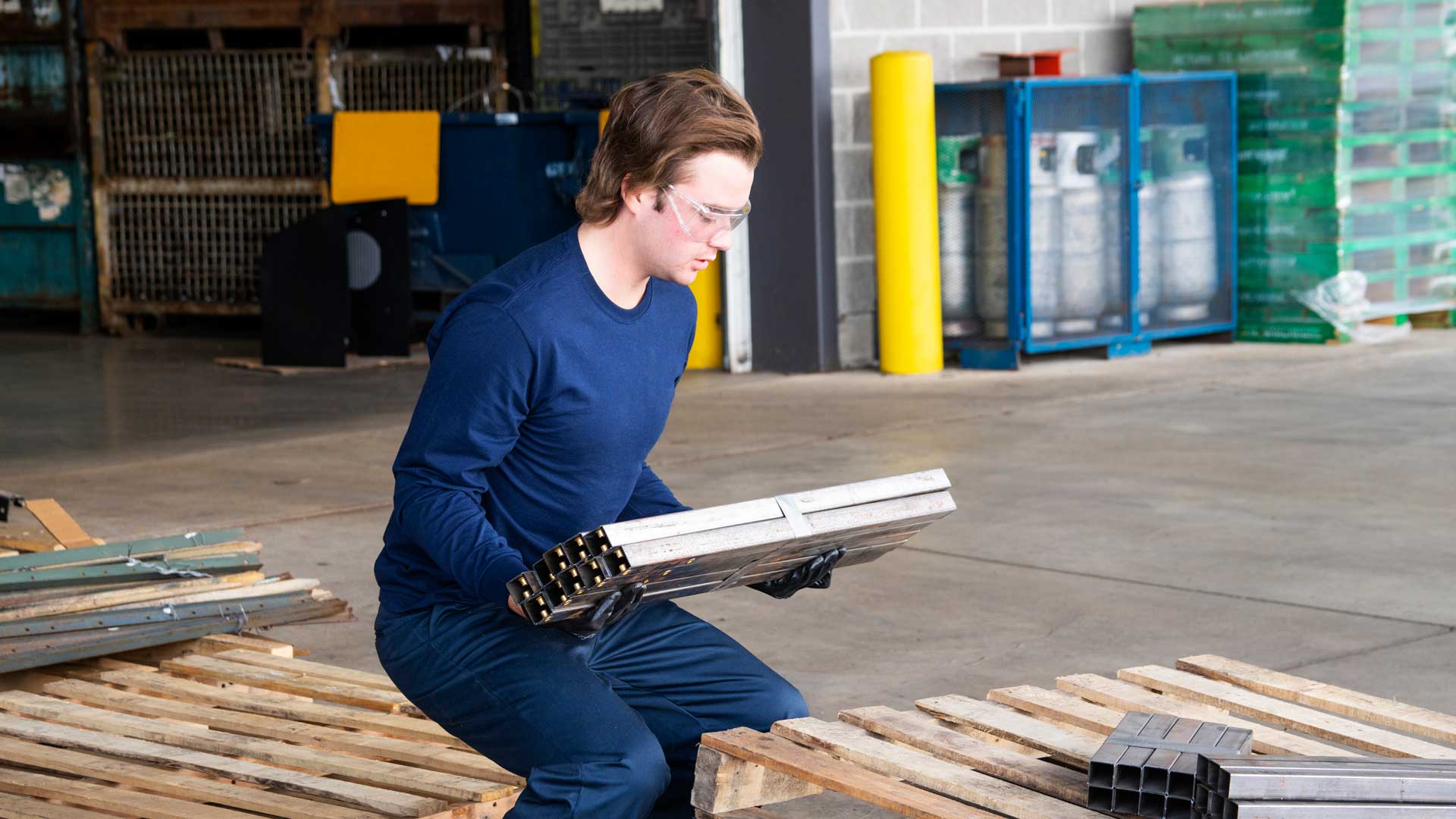Smart Moves: Ergonomic Material Handling in Modern Industry
In today’s fast-paced and demanding industrial landscape, ensuring the safety and well-being of your workers is paramount. To achieve this, adopting smart ergonomic material handling strategies is crucial.
Did you know that workplace injuries and musculoskeletal disorders account for a significant portion of company expenses? According to many studies, injuries, including overexertion and repetitive motion, cost businesses almost a billion dollars a week. By integrating ergonomic principles into your material handling processes, you can not only protect your most valuable asset, your workers, but also optimize efficiency and save money.
With the right approach to ergonomic material handling, it is possible to reduce worker strain, enhance productivity, and minimize the risk of accidents.
Let’s explore the importance of ergonomics in the modern material handling industry and how it can revolutionize your operations.
Improving Safety and Reducing Worker Strain
The first and foremost advantage of ergonomic material handling is its potential to improve safety and reduce worker strain. Traditional manual lifting and material handling methods often expose workers to repetitive motion injuries, back strains, and other musculoskeletal disorders.
By incorporating ergonomic equipment and tools, such as powered lifts and adjustable workstations, you can mitigate these risks. Workers will experience less physical strain and fatigue, leading to increased job satisfaction and reduced absenteeism.
Ergonomic Material Handling Enhances Productivity
Ergonomic material handling strategies are not only beneficial for worker well-being but also for productivity.
When ergonomic principles are applied, tasks are redesigned to align with the workers’ natural body movements and capabilities, leading to more efficient work processes. This alignment reduces the physical strain and fatigue on workers, allowing them to perform tasks more quickly and with less effort.
For example, by introducing adjustable positioning equipment or reorganizing a workspace to minimize unnecessary movements, workers can handle materials more efficiently.
This not only speeds up the material handling process but also minimizes the time spent on each task, leading to a higher overall output.
Additionally, when workers experience less fatigue and physical strain, they can maintain a consistent level of performance throughout their shift, further boosting productivity. Many studies have shown that implementing ergonomics improves worker morale.
Optimizing Workflow and Space Utilization
Another key benefit of ergonomic material handling is its ability to optimize workflow and space utilization. With ergonomic equipment and layouts, you can design a more efficient and streamlined work environment. By utilizing vertical storage systems, you can maximize available floor space, improve accessibility to materials, and enhance overall organization.
You should also be arranging tools and materials within easy reach to reduce the need for workers to move across large distances, thereby conserving space that would otherwise be required for wider aisles or extra storage areas. Ergonomic equipment such as compact lifting devices or modular workstations can be designed to fit into smaller spaces or to be easily reconfigured as needs change, further optimizing the use of space in a material handling setting.
This efficient space utilization not only improves operational flow but also can lead to cost savings by reducing the need for larger premises or extensive storage facilities.
Reducing Workplace Fatigue and Injuries
Fatigue and injuries are common issues in industries that involve repetitive or physically demanding tasks.
Ergonomic interventions are designed to adapt work environments and tasks to fit the capabilities and limitations of workers, thereby reducing the physical stress on their bodies. Injuries can include a range of conditions affecting muscles, tendons, nerves, and joints, particularly in the back, neck, shoulders, and limbs.
They often result from repetitive motions, awkward postures, prolonged standing, or lifting and moving heavy objects – common elements in material handling tasks. By redesigning these tasks to be more ergonomic, such as using mechanical aids for lifting or adjusting the height of work surfaces and altering the frequency and methods of repetitive tasks, the risk of injury is significantly reduced.
Business Cost Savings as a Result
The cost savings associated with implementing ergonomics in material handling are multifaceted and substantial. Primarily, they stem from the reduction in workplace injuries and associated costs. As discussed, ergonomic interventions lead to a decrease in musculoskeletal disorders and other injuries resulting from repetitive strain, overexertion, or improper lifting, positioning and handling techniques, and this is what translates to cost for the business.
These injuries can be costly for businesses, encompassing direct costs like medical treatment, physical therapy, and compensation claims. Moreover, there are indirect costs, such as the expense of hiring and training replacement workers, lost productivity, and potential increases in insurance premiums.
By reducing the incidence of these injuries, ergonomics offers a direct pathway to financial savings.
When workers are equipped with ergonomic tools and operate in environments designed to minimize strain and fatigue, they can perform tasks more efficiently and with greater speed. This increased productivity translates to higher output with the same or fewer resources, optimizing operational costs.
Additionally, ergonomic practices can extend the working life of employees by reducing the wear and tear on their bodies, leading to savings in recruitment and training costs for new employees
Investing in Ergonomic Material Handling Equipment
To fully harness the benefits of ergonomic material handling, it is essential to invest in the right equipment. There are several types of ergonomic equipment available, ranging from lifting aids to adjustable workstations and lifting tables.
When selecting ergonomic equipment, it is important to consider factors such as the specific tasks involved, the frequency of material handling, and the physical capabilities of your workers. Additionally, ergonomic equipment should be regularly maintained and inspected to ensure its optimal performance and longevity.
Ergonomic Material Handling Is a Smart Move
In the competitive world of modern industry, prioritizing the safety and well-being of your workers is a smart move. By implementing ergonomic material handling strategies and investing in ergonomic equipment, you can create a safer work environment, reduce worker strain, enhance productivity, and minimize the risk of injuries and accidents. Remember, a well-designed ergonomic approach not only benefits your workers but also positively impacts your bottom line.
Take action today to revolutionize your material handling processes. Explore the wide range of ergonomic equipment available and consult with experts in the field to identify the most suitable solutions for your specific needs.
For expert help in making this smart move, contact us today.



